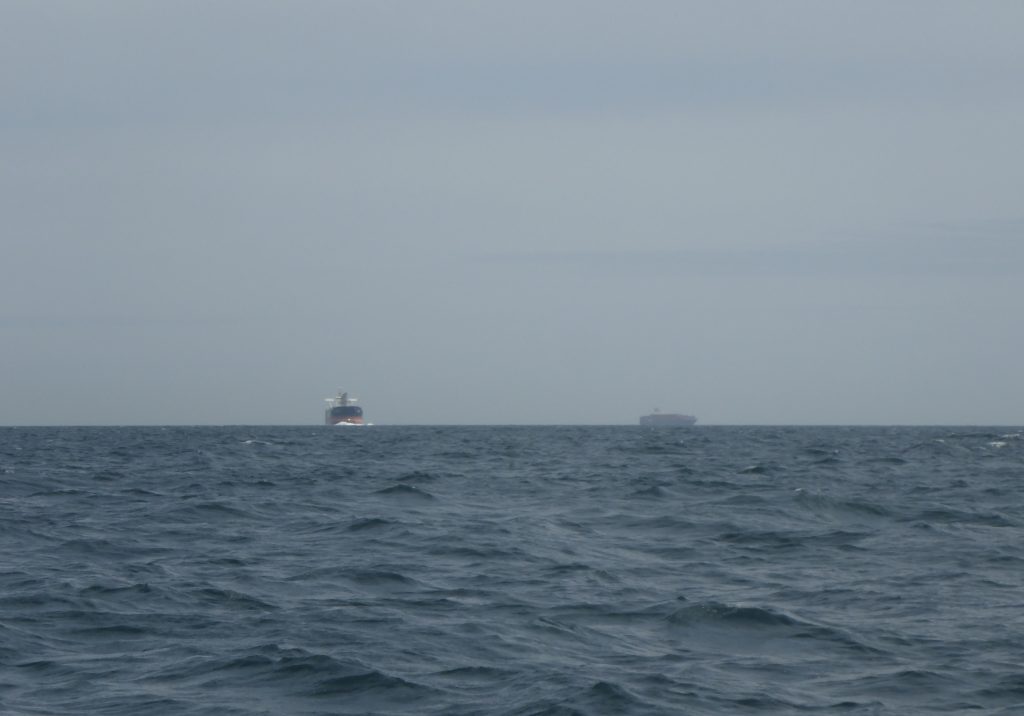
Straits of Dover. View to Port. Spoke to each Ship on VHS. The first ship has already altered course. Both passed astern of us.
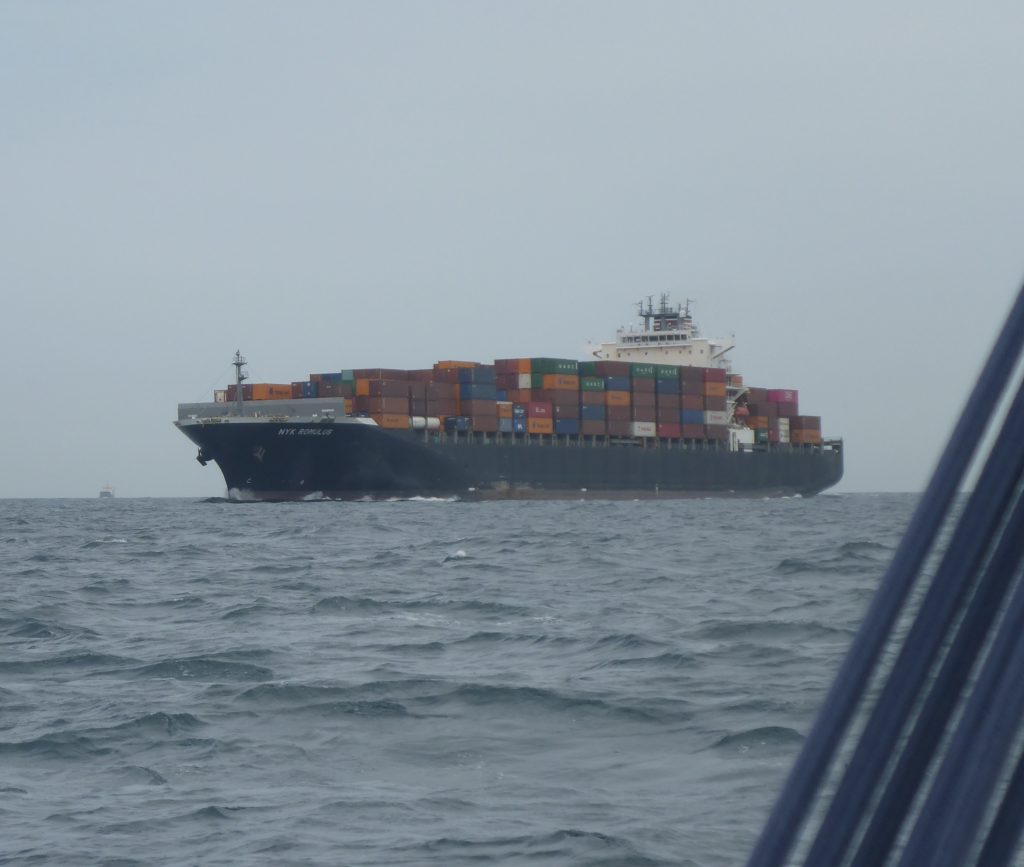
Passing astern of us
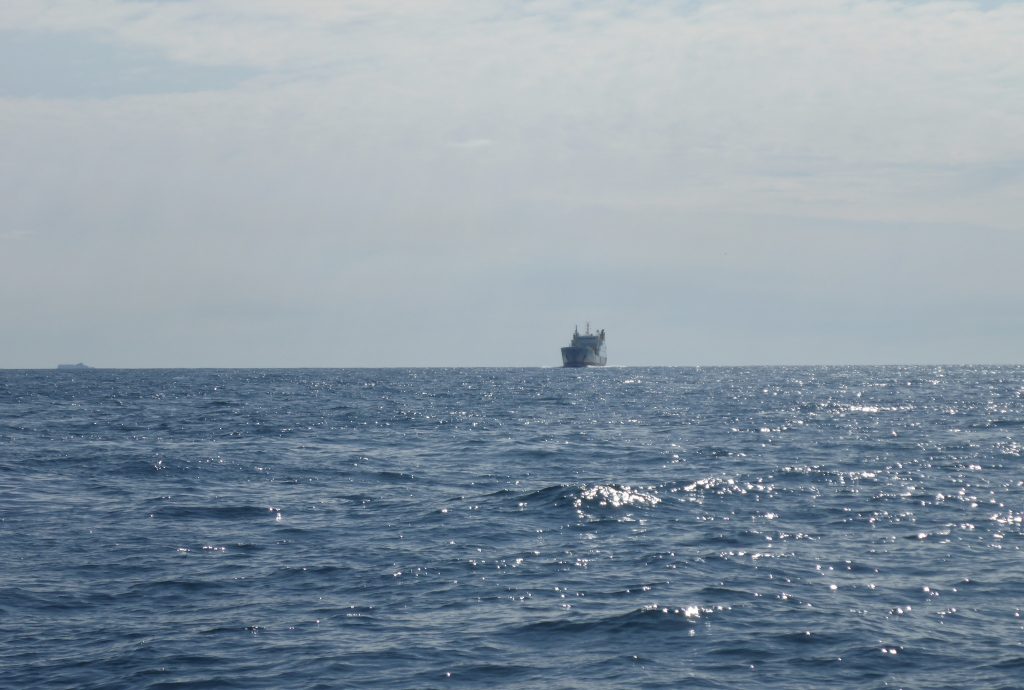
View to port. This ship altered course so no need to call …
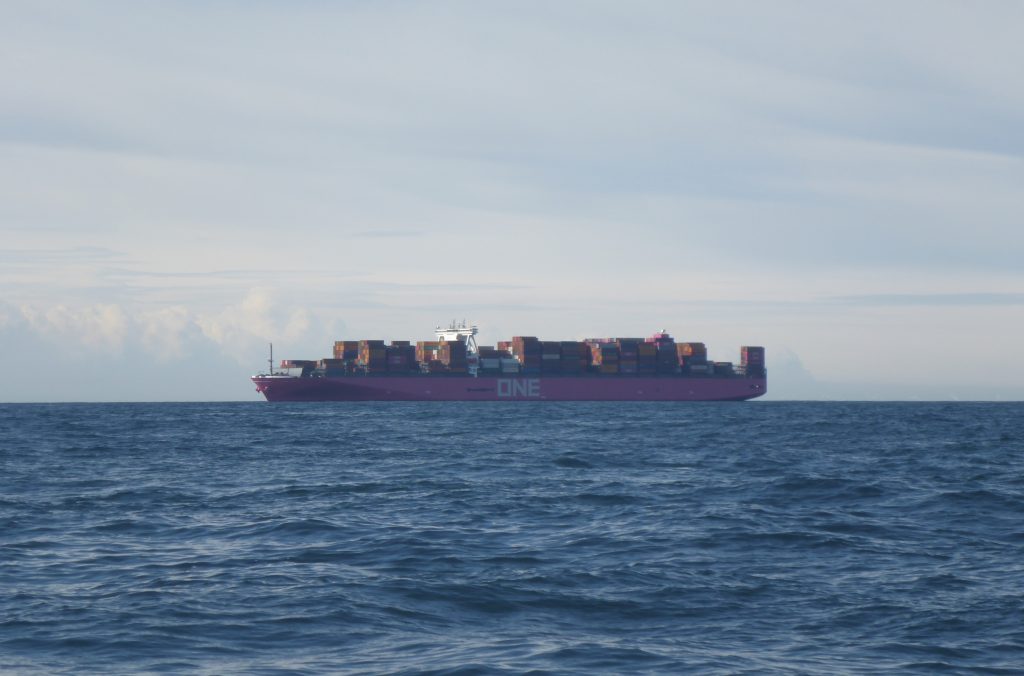
Off our starboard bow. 25 minutes earlier our CPA was 0 NM. I was about to call when the CPA became 1 NM. The ship had turned to starboard to pass in front of us.
I’ve been listening to the views of some regarding Collision Regulations. Specifically relating to sailing vessels and ships. Taking account of these views I believe that some prevailing attitudes are dangerous.
Two incidents involving the same sailor this year are examples of making bad mistakes.
The first incident involved the sailor approaching a busy intersection convergence zone where there were quite a few ships entering or leaving a TSS.
There had been no communication by VHF.
Approaching a ship the sailor got nervous and although believing he was the “stand on” vessel, at close quarters turned towards the ship with the intention of passing astern. The extremely concerned ship’s watch officer called immediately and urgently requesting that the yacht ‘maintain course and speed’. A French coast guard station, monitoring this busy area also called and reprimanded the yacht for not obeying the Col Regs.
I’ve been in this sort of situation. I’ve spoken to several ships in the space of a few minutes and then been stress free.
It is an absolute NO to turn towards a ship. By all means bear away at the right distance and run parallel or away from the ships course. But even this action must be done early and if the sailing vessel can clearly see the Bridge of the ship it is thought that the watch officer on the ship can see the sailing vessel.
The same yachtsman, this time in the open ocean, observed on his AIS a dangerously small Closest Point of Approach (CPA) with a large ship. As the stand on vessel he maintained course and speed and had to take evasive action 300 metres from collision with ‘sails all over the place’.
I’ve never found myself in that situation in the open ocean because I’ve always spoken to the ship immediately.
I spoke to a hugely experienced and accomplished sailor from Oostende. His view was that if a ship remained on the same bearing he would call them and ask their intentions. This call would be made in plenty of time. If no response was forthcoming he would sail away from the ships course as rapidly as possible.
Another very experienced Belgian colleague reminded me that we MUST obey ColRegs.
On the other hand, an English colleague argued that he wouldn’t communicate with a ship because he worried about a misunderstanding between himself and the ship. That said, on his very impressive and accomplished sail from Falmouth to Madeira he had to take late evasive action at night because he had not called the approaching ship. I’m convinced that an early call to that ship would have avoided the drama of late avoiding action in the dark. But again he should have reacted much much earlier.
Most of us carry hand-bearing compasses. Today we have VHF and AIS. Even Radar. Although I will always hate poor visibility my equipment does give me some degree of comfort.
In my experience I see a target first on radar or AIS. In good visibility I might pick up the target on the horizon. I check the CPA. When the CPA is 20 to 30 minutes and within 0.7 of a nautical mile that’s close enough. The movement of a sailing boat even in moderate conditions can make the distance of the CPA vary quite a bit but the minutes will be accurate and decrease rapidly. There is not much time. That’s close enough for me. I know the ships name and MMSI number. I call them up and 19 times out of 20 they respond.
In the open ocean I might once have stirred a napping watch officer but nearly every time the result is positive from the ship. In our congested Southern North Sea and English Channel the bridge of a ship is vigilant.
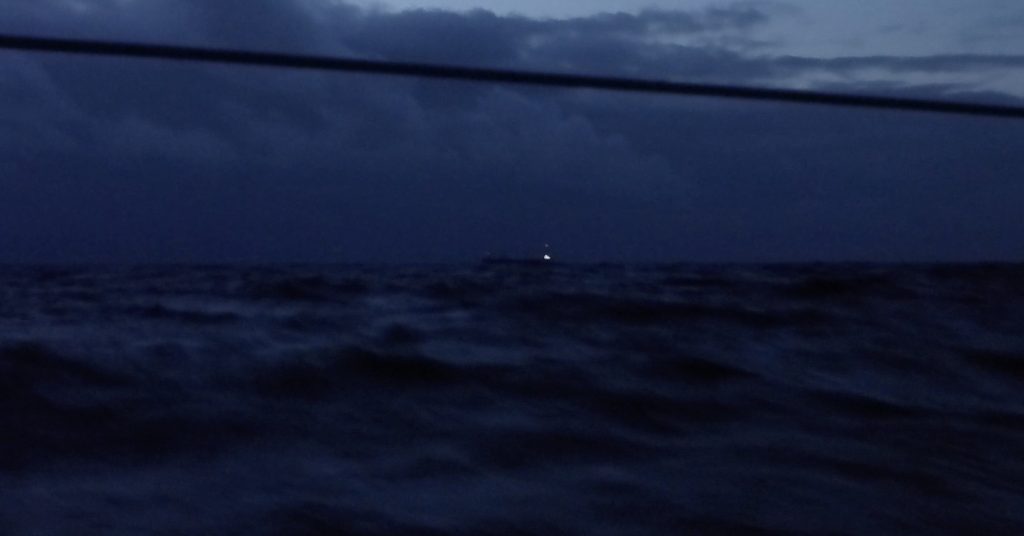
Mid Ocean inbound to Falmouth from The Azores. Friday 13th July & I did speak to this watch officer.
I call and invariably say “This is Sailing Vessel ‘Talisker 1” … giving position etc in relation to them and then … “request permission to maintain our course and speed”. I know it sounds polite but good manners have their place.
The response I get from a ship is almost always to maintain my course and speed and that they are either passing well clear or they have altered course already to pass well clear of us. Occasionally I will make sure that we have understood each other. There is no misunderstanding and anyway I can verify, 20 to 30 minutes from the CPA that the distance is increasing due to a course change by the ship.
If a ship does not respond I sail away from the ships course immediately. I have plenty of time to deal with any sail change and I do not feel hurried.
The assumption by us that a ship WILL always obey Col Regs is flawed. It is a dangerous view to take. Just to blindly carry on sailing towards something that won’t even feel the impact is ludicrous.
I will not turn towards a ship to pass astern. I will either ‘heave to’ or sail parallel and then away from the ships course, sometimes even coming about and sailing back whence we came.
Sailing is slow motion. A situation that could have been rectified on time can so easily be irredeemable with poor decision making. 20 to 30 minutes is a very short amount of time on a sailing vessel with a ship approaching.
In summary. With modern instruments and communication call the ship EARLY. Agree with the ship what is happening. Make sure there can be no misunderstanding. The CPA will start to increase AND the ships bearing will change. If a ship does not respond sail away from the ships course.
This sailing vessel has almost certainly impeded the passage of a vessel “which can safely navigate only within a narrow channel or fairway.”
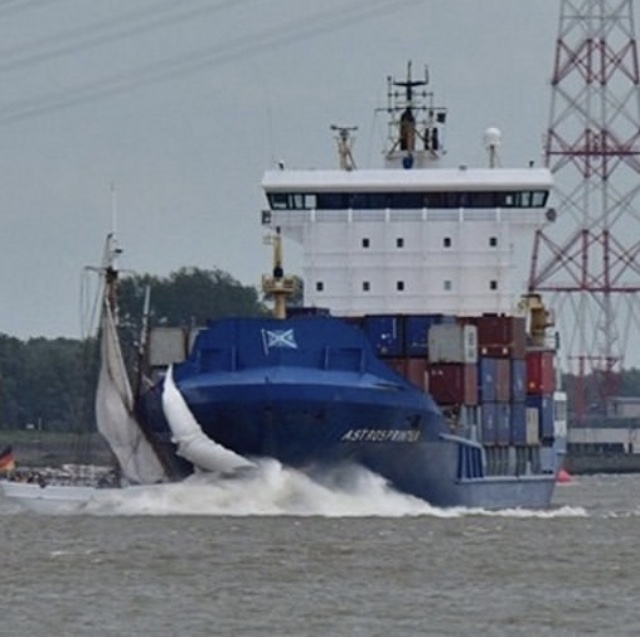
But it does show what even a small ship will do to one of us if mistakes are made.
Great article James, absolute common sense when you put it like that ⛵️
William. I hope it makes sense. Anyway … touch wood … still avoiding dramas.
Excellent article, nicely explained. I’ve snjoyed you’re calm communications on the YouTube videos which are very informative and reassuring. Thanks!
Ian. Thank you very much for your kind comment. ATB James
Good article. It is worth saying, however, that all of the above only applies when you are a ‘sailing vessel’ as defined by the rules. If you are operating propelling machinery, even motorsailing, then you are a Power Driven Vessel and must act appropriately. This may well involve altering to Stbd for another PDV on your own Stbd side (ie to pass around the stern) – there are alternatives (retiring turn, taking all way off, etc).
The rules may seem complicated to some but they aren’t really. Certainly no more complex to learn than good sail trim or engine maintenance.
Not meant as a criticism, just a comment from a professional mariner and recreational sailor.
Stuart. Thank you for your very helpful comment. I SHOULD have made clear that the n US was SAIL. ATB James
Very good article. I always call at least 30 minutes ahead, give our position, navigation status and size, confirm that the ship can see us, and if we’re sailing (as opposed to motoring), politely ask the ship to alter course. If motoring, I ask their intentions. Assuming nothing and communicating early is the key to avoiding problems. We’ve had crew that are surprised we do this and have been more surprised that the ship responds. But the only time a ship didn’t respond, I was able to see it had already altered course. After we pass, I also call the ship back, thank it and wish it Bon Voyage.
Thank you for taking the trouble to comment. Fair winds and stay safe.
Excellent article. Shipping is working – we are enjoying ourselves.
When in doubt give way!
Thank you for commenting.